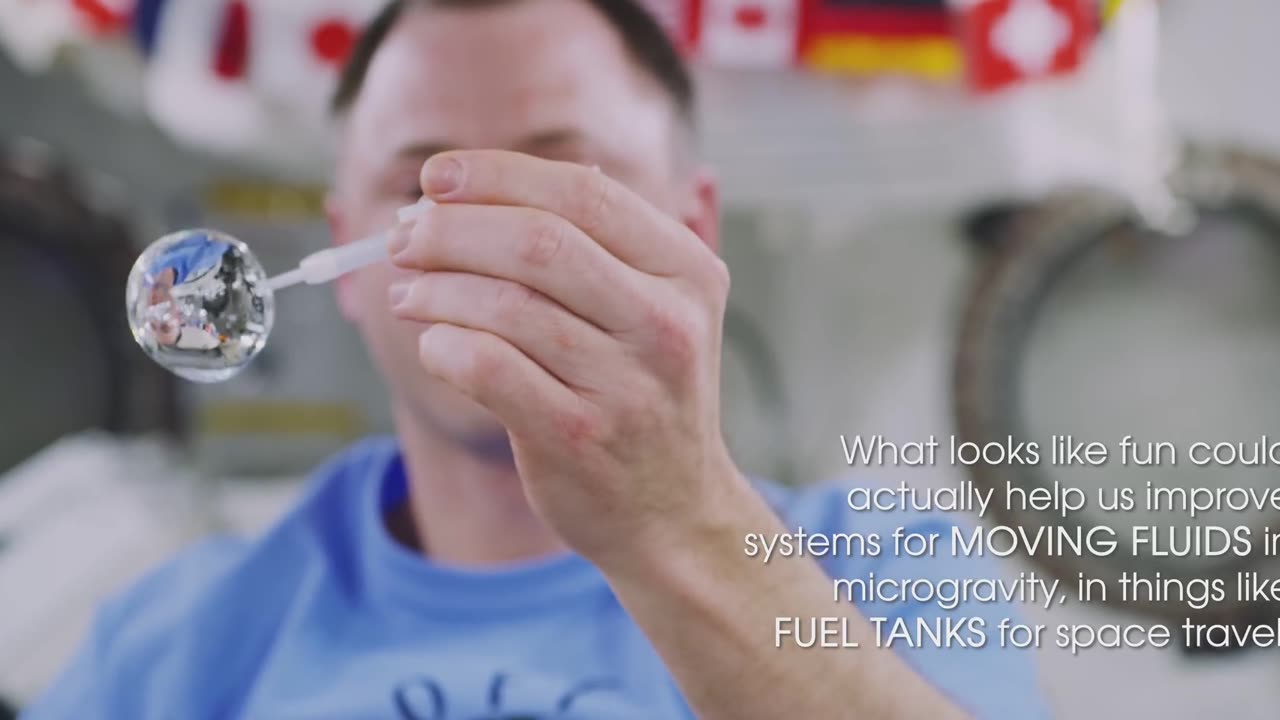Premium Only Content

Moving Water in Space- 8K Ultra HD
In the vacuum and microgravity environment of space, water behaves differently compared to how it does on Earth. While the movement of water in space may not be exactly like the fluid motion we're used to on Earth. Several ways are:
1. Floating Water Droplets : In microgravity environments like the International Space Station (ISS), water droplets can be observed floating due to the absence of gravitational forces. These droplets can move in response to air currents, astronaut movements, or other external influences.
2.Surface Tension Effects: Surface tension, which is the cohesive force on the surface of a liquid, can lead to unique behaviors in microgravity. Water droplets can form into nearly spherical shapes due to surface tension, and these droplets can move and merge in interesting ways.
3. Experiments with Capillary Action: Capillary action, which is the movement of liquids in narrow spaces against the force of gravity, can still occur in microgravity. This can lead to the movement of water through small tubes or gaps.
4. Vapor Movement and Condensation: Water vapor in space can move and condense on surfaces, especially in regions where the temperature allows it to transition between gas and solid (ice) phases.
5.Icy Bodies and Sublimation: On icy bodies like comets, water ice can transition directly from solid to gas (sublimation) when exposed to sunlight, leading to the movement of gas and dust particles away from the surface, creating a tail.
While these behaviors might not be as intuitive as the movement of water on Earth, they are a result of the unique physics of the space environment. For images or visual representations of these phenomena, consider exploring official space agency websites, space science publications, and educational resources related to microgravity and space experiments.
-
 LIVE
LIVE
Dear America
9 hours agoTrump Puts China On An Island, Brings Xi Jinping To His Knees + Tampon Tim Gets BOOED By Veterans!
2,693 watching -
 LIVE
LIVE
Wendy Bell Radio
4 hours agoTrump Wins Again
5,035 watching -
 1:26:51
1:26:51
JULIE GREEN MINISTRIES
2 hours agoLIVE WITH JULIE
54.8K89 -
 1:25:49
1:25:49
Game On!
17 hours ago $2.34 earnedThe Masters 2025 is HERE!
10K -
 LIVE
LIVE
Canada Strong and Free Network
47 minutes agoCanada Strong and Free Network
132 watching -
 8:33
8:33
SKAP ATTACK
16 hours ago $1.31 earnedWhat Went Wrong With the Nuggets
11.7K4 -
 23:51
23:51
JasminLaine
15 hours agoCBC STUNNED Into Silence as Carney PANICS—Defends Bill C-69 and His Foreign Profits
12.6K19 -
 17:25
17:25
World2Briggs
13 hours ago $1.71 earnedThe Dark Reality Of Human Trafficking In The United States
10.6K11 -
 4:31
4:31
Mrgunsngear
14 hours ago $3.95 earnedBreaking: Kash Patel No Longer ATF Director! Replacement Has Been Named
13.7K11 -
 43:42
43:42
Esports Awards
23 hours agoAustinJohnPlays on Pokémon Card Collection & Evolution of YouTube | Origins Podcast #2
10.1K